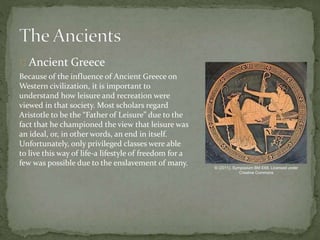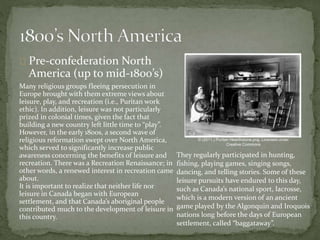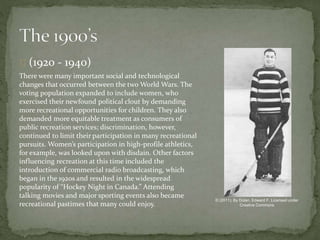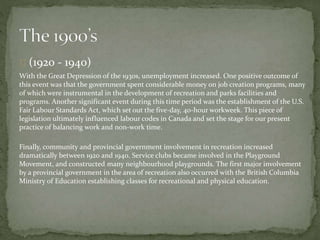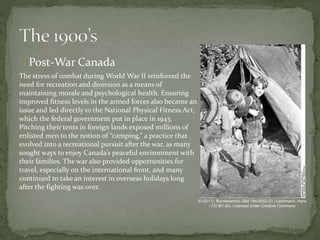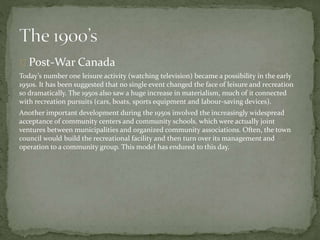The document provides a summary of leisure and recreation over different time periods, beginning with Ancient Greece, Rome, and Medieval Europe. It then discusses perspectives and activities in pre-confederation North America, post-confederation North America between 1840-1880, and "Young Canada" between 1880-1900. Further sections cover 1900-1920, 1920-1940, and the post-war period. Key points include Aristotle's view of leisure as an ideal, the influence of religion on perceptions of leisure, and the expansion of recreational opportunities and facilities over time.

